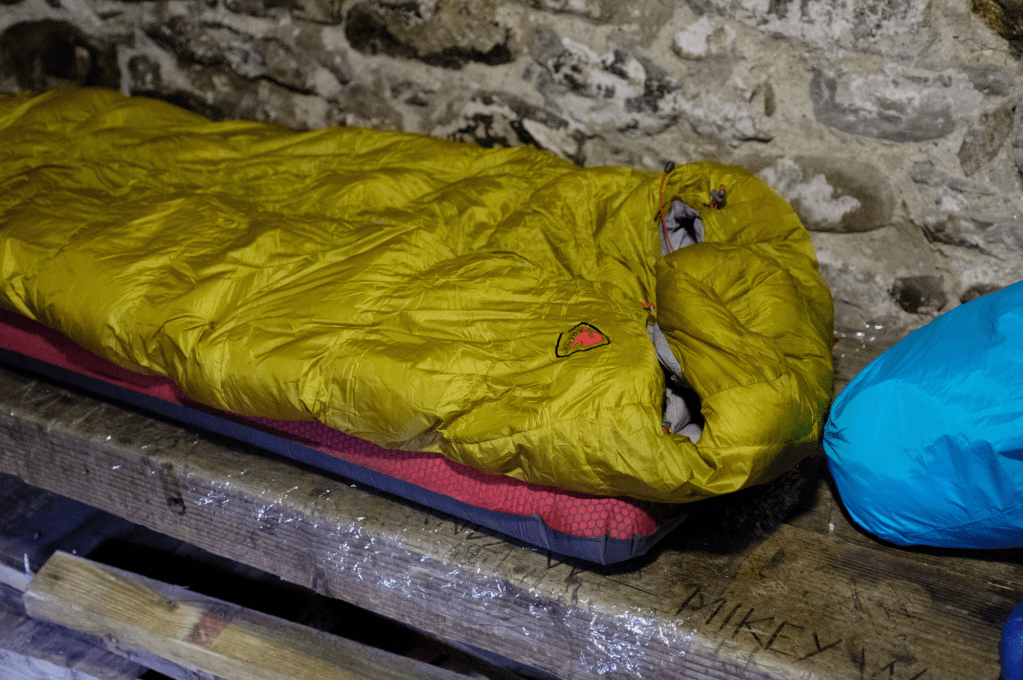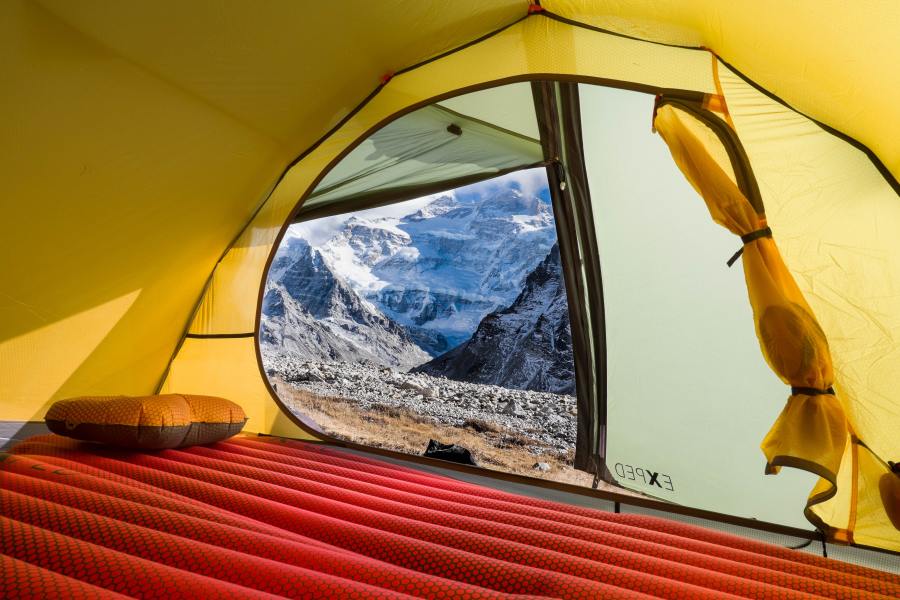Sleeping mats provide not only comfort in camp but much-needed protection from the cold ground, to which you could lose vital heat overnight. They are an often overlooked but vital aspect of your sleep system when you head outdoors to spend a night under the stars. But, as there is no one-size-fits-all hillwalker, the same can be said for sleeping mats since manufacturers have dedicated time and tech to getting you a good night’s sleep outdoors. This means there are a few different types of sleeping mats on the market with competing pros and cons (foam vs inflatable mats is an ongoing outdoors debate) that will suit you as a sleeper – do you run hot or cold and are you a side-sleeper or most comfortable lying on your back? – and the conditions in which you plan to camp.
So, before we hunker down and look at the different types of sleeping mats and their benefits, there are some general factors you must take into consideration for each night spent outdoors.
Different types of sleeping mats: Foam vs inflatable mats and temperature
First and foremost, you must consider the temperature when you plan to pitch – particularly ground temperature.
Sleeping mats are rated with an R-value (representing how well the insulation resists heat loss from the ground). The colder the ground temperatures you’re likely to experience, the higher an R-value you’ll need.
Sleeping mats can be broken down into two main categories: closed-cell foam and inflatable (the latter can be broken down again into inflatable and self-inflating). Inflatable mats have a much higher capacity for insulation than foam mats, which can be an important consideration during the cold months. Both types have their pros and cons which we’ll discuss below.

Pitching on a low-level summertime Lakeland camp. Credit: Jessie Leong.
Mummy vs rectangular sleeping mats
Secondly, you’ll want to consider the shape of your mat.
It’s a very good idea to test your mat before you buy to ensure it’s a comfortable fit both in terms of length and width. A further consideration is your tent size and shape – after all, all that insulation is no good to anyone if your mat doesn’t fit inside. Generally speaking, mummy shaped sleeping mats are designed to take up less room in smaller one-person tents. If you want extra room to stretch out and are in a more spacious two-person tent, you could opt for a square shape sleeping mat.
Many manufacturers create mats in multiple lengths and design models made specifically for women who, generally speaking, have different needs in terms of insulation and shape of sleeping mat.
Lastly, you’ll also want to ensure your sleeping mat is compatible with your bivvy or your sleeping bag. Additional accessories such as connectors can be bought to attach your mat to your bag or even strap two mats together – handy for couples who move around in their sleep!
The three different types of sleeping mats
Closed-cell foam mats

Drying gear, sitting on the Multimat Superlite 8 closed cell foam mat, wearing a BAM t-shirt and Mammut Runbold trousers. Credit: Chris Townsend
If you picture a backpacker, you’ll likely imagine a walker with a big pack strapped on their back and a foam mat rolled up and lashed to it. This is what people are referring to when they talk about a foam mat. Indeed, closed-cell foam mats have been used for many years by backpackers as a simple, lightweight – albeit not very compact – part of their sleep system. Generally, foam mats either roll up to pack away or fold up in a concertina formation.
They are made of a dense foam which is both lightweight and inexpensive. In comparison to their inflating counterparts, they’re incredibly durable and easy to repair thanks to their simplicity. They can also double up as a camping seat. Backpackers will sometimes carry a foam mat to lay underneath air or self-inflating mats to prevent their expensive kit from punctures and to provide an extra layer of insulation. While foam mats might not feature sophisticated insulation technology, they are consistent and offer some separation between you and the ground. But of course, the trade-off for value and durability is comfort. With a foam mat, you’ll need to find a good, flat pitch spot as their lack of depth won’t protect you from the discomfort of uneven ground.
Inflatable air mats

Thick insulated inflatable mats are great for winter use, or for comfort at all times of year. Credit: Alex Roddie
Available in a variety of shapes and sizes to suit your needs, inflatable air mats have developed over the years to become a good – if potentially expensive – option when it comes to the different types of sleeping mats. Top of the range inflatable mats can be lightweight and incredibly comfortable – simply opening the valve releases air to adjust the firmness of your mat – as well as compact when packed down. A variety of inflation methods can be incorporated into the design (such as the pump sacks utilised in the Rab Stratosphere 5.5 and Exped 3R M Mummy) which avoids the need for you to use up all your puff when inflating and prevents moisture and mildew build up inside the mat cavity.
- You can learn how to clean your sleeping mat here
Most importantly, many are now made with additional insulation which works in addition to the air already in a blown-up mat to protect you against losing heat to the cold ground overnight. Sometimes, reflective materials used to boost the R-value of your sleeping mat and give extra warmth can cause a rustling sound which may irritate some campers. Older Therm-a-Rest sleeping mats with built in reflective materials, for example, could be a little noisy if you shuffled in your sleep, but the issue has since been fixed with the latest NeoAir Xlite NXT models which won the top spot in the camping tech category in The Great Outdoors’ Gear of the Year Awards 2023.

A couple rolling up sleeping mats in the morning. Credit: Benjamin Cannon
One downside to air mats is they are not always the most durable, and can be prone to puncture (anyone who’s camped with a dog will know the fear of paws and claws on expensive, puncturable mats). Always carry a complete kit for field repairs.
Self-inflating mats
Self-inflating mats are your durable combo deal, built with foam cells that inflate when you open the valve which also allows air in automatically for easy set up at camp. As with inflatable air mats, they come in all manner of shapes and sizes and insulation levels to suit your needs, but aren’t as compact. They do also tend to be a little heavier and more expensive than mats inflated exclusively with air.








